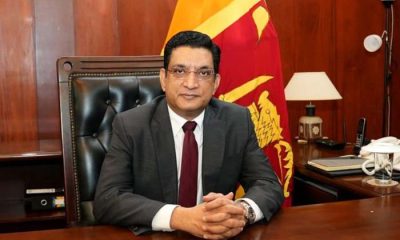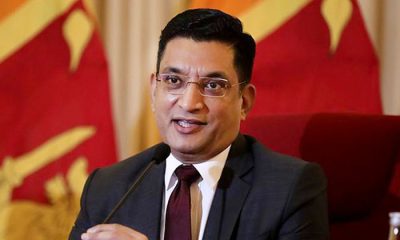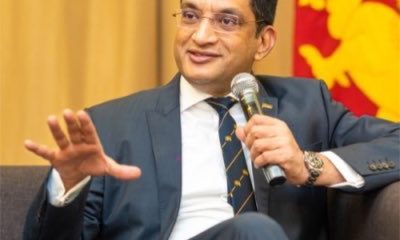Midweek Review
A message from Keith Noyahr at the launch of ‘Notes from the battlefield’
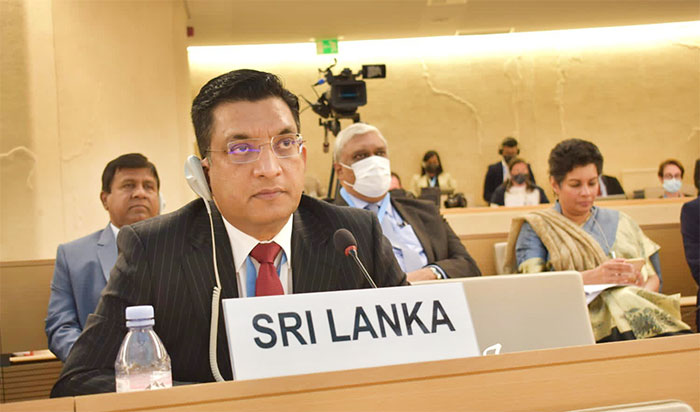
The 51 sessions of the Geneva-based United Nations Human Rights Council is underway. Sri Lanka is again in the focus with Western powers and their lackeys targeting the war-winning Sri Lanka military.
Successive Sri Lankan governments, including the incumbent administration, failed to address core issues. Their failure to counter accusations that over 40,000 Tamil civilians died in the hands of the military is inexcusable. The Foreign and Defence Ministries, without further delay, should review Sri Lanka’s strategy or fall victim to unceasing Western machinations against the country for militarily crushing the LTTE, against their advice.
By Shamindra Ferdinando
Lankadeepa journalist Ratnapala Gamage had been with the late General Rohan de S. Daluwatte, Chief of Defence Staff (CDS), in Sept. 2001 at the latter’s Colombo office when the one-time Army Commander (May 1996-Dec 1998) was informed of the killing of Vaithilingam Sornalingam alias ‘Colonel’ Shankar.
At the time of his death the 51-year-old former Air Canada employee commanded the ‘Air Wing’ and ‘Marine Division’ of the LTTE.
The 20-minute call interrupted the exclusive interview Gamage was having with the CDS as Daluwatte had to rush for a meeting which was also to be attended by the then President Chandrika Bandaranaike Kumaratunga.
Ex-Lankadeepa journalist Gamage, now domiciled in Switzerland, dealt with the high profile ‘hit’ carried out by the LRRP (Long Range Reconnaissance Patrol) aka DPU (Deep Penetration Unit) in the eastern part of the Vanni region. The raid carried out so deep, within the LTTE-held territory, sent shock waves through not only the enemy’s rank and file but the Colombo-based diplomatic community as well. Gamage in his maiden book ‘Rana Bimaka Panhinda’ (Notes from the battlefield) discussed the war that was brought to a successful conclusion in May 2009, with the focus on his experiences and visits to operational areas. The launch of ‘Rana Bimaka Panhinda’ took place at the J.R. Jayewardene Centre on Sept 13 with the presence of Lankadeepa Editor Siri Ranasinghe. The gathering was told a Tamil translation of the book would be available later this year. Gamage had an opportunity to meet one of those intrepid men who participated in that particular operation on the Oddusuddan-Puthikudirippu road, east of Kandy-Jaffna A9 hi-way on the morning of Sept. 26, 2001. Gamage reveals his failed bid to convince one of those Long Rangers to give him one of the four pictures he had of the ‘hit’ on Shankar, one of Prabhakaran’s closest associates. Gamage explained as to why the soldier declined to give him a photograph. At the time the LRRP unit triggered the claymore mine that blasted the heavily guarded vehicle, the attackers had believed Velupillai Prabhakaran was on the move in it. Operations behind enemy lines that developed over the years involved elite men, including Muslim military personnel and ex-LTTE cadres. During the Eelam War IV, the Air Force, on more than one occasion, evacuated several teams of Long Rangers who had got trapped in enemy territory. Did such highly successful operations carried out behind enemy lines prompt Prabhakaran to return to the negotiating table in Feb 2002? The Norwegians finalized the one-sided Ceasefire Agreement (CFA) that included a clause specifically meant to halt all LRRP/DPU operations. Due to an oversight on the part of Gamage, the unprecedented crisis caused by the raid on a safe house at Athurugiriya Millennium City housing scheme, operated by those conducting operations behind enemy lines, didn’t receive the attention it deserved. The UNP government crippled the clandestine operation in spite of assurances given by no less a person than the then Army Commander Lt. Gen. Lionel Balagalle that LRRP/DPU didn’t target UNP leader Ranil Wickremesinghe.
Interestingly, Gamage wasn’t at the launch of his book. The ex-Lankadeepa defence correspondent addressed the gathering from his home at Aarburg, Switzerland at the onset of the event attended by several retired military officers. Retired Maj. Gen. Sanath Karunaratne, who led the defence of the Elephant Pass base way back in July 1991, in his then capacity as a Major, was among the guests at the launch. Gamage discussed the heroic defence of Elephant Pass base and the largest ever sea-borne operation ‘Balavegaya’ launched to save those trapped therein.
The beleaguered men of the sixth battalion of the Sinha Regiment (6SR) under Karunaratne’s command held the strategic base till seaborne ‘Balavegaya’ troops fought their way in from the Mullaitivu coast to break the siege. ‘Balavegaya’ involved 10,000 men and was considered the largest action undertaken before ‘Operation Riviresa’ (Oct-Dec 1995) that brought Jaffna and its suburbs under government control.
If not for the successful suicide attack on an advancing armour-plated LTTE bulldozer carried out by Lance Corporal Gamini Kularatne, the garrison could have probably fallen before the Army launched Operation ‘Balavegaya.’ Kularatne received Sri Lanka’s highest gallantry award ‘Parama Weera Vibhushana’ for the supreme sacrifice he made on the battlefield. Kularatne was the first recipient of the decoration.
Referring to the fall of Kokavil detachment south of Elephant Pass in June 1990, Gamage quite rightly blamed the military top brass for the shortcomings. The second recipient of the highest decoration was Captain Saliya Upul Aladeniya also of the Sinha Regiment. Aladeniya commanded besieged Kokavil detachment established for the protection of the Rupavahini transmission tower there. However, the LTTE attacks on isolated detachments along the A 9 road north of Vavuniya up to Elephant Pass should be examined against the backdrop of the then President, late Ranasinghe Premadasa’s foolish attempts to reach a consensus with the LTTE by even transferring truckloads of arms to it. In June 1990 the government lost control of the A 9 road north of Vavuniya up to Elephant Pass. That stretch of the road overland route remained inaccessible to the government until the Army systematically liberated it in the final phases of the war in January 2009.It would be pertinent to mention that though 6 SR valiantly held Elephant Pass base in 1991 with less than a battalion of troops, a Division plus troops couldn’t repulse multiple LTTE attacks on Yakachchi and Elephant Pass base in late April 2000. The 54 Division abandoned the base and retreated in all directions. The LTTE killed well over 1000 officers and men. The then Army Commander Lt. Gen. Balagalle made a vain attempt to portray the humiliating Elephant Pass defeat as a strategic withdrawal. Many fighting personnel also perished as they ran out of potable water after the LTTE destroyed their sole water source at Yakachchi
Keith Noyahr’s commendation among the well-wishers who couldn’t attend the book launch but chose to issue a recorded statement commending Gamage’s work was Keith Noyahr, the Deputy Editor of now defunct ‘The Nation. Noyahr recalled his close association with Gamage during the conflict and when he earlier worked at the Daily Mirror, the sister paper of Lankadeepa. Noyahr fled the country following his abduction and subsequent release in May 2008. The then Mahinda Rajapaksa administration was accused of targeting ‘The Nation’ journalist over his column ‘Military Matters’ that questioned the conduct of war-winning Army Commander the then Lt. Gen. Sarath Fonseka. Unidentified persons abducted Noyahr on the night of May 22, 2008 in the wake of a provocative piece titled ‘An Army is not its Commander’s private fiefdom’ on May 11, 2008. Noyahr wrote the column under the pseudonym ‘Senapathi. ’Fearing Noyahr’s fate would also befall him, Gamage quietly left the country with his only son in Dec, 2008. His wife died a few years earlier and in spite of political changes never returned to the country. The then joint Opposition comprising UNP-JVP-TNA-SLMC-CWC backing Fonseka at the 2010 presidential election must have been quite a shock for those who criticised Fonseka ‘s controversial strategies, that however brought about the unbelievable crushing of the LTTE in the battlefield, which many a pundit claimed was not within Sri Lanka’s military capability.
Gamage declared in his foreword, his close working relationship with the then Daily Mirror Editor Lalith Alahakoon (having joined The Island in June, 1987, the writer worked under Alahakoon who was the Night News Editor at that time) and his Deputy at the Daily Mirror Noyahr.
Acknowledging his weekly contribution to the Sunday Lankadeepa greatly enhanced his capacity, Gamage appreciated the opportunity and support extended by both Alahakoon and Noyahr for him to do a weekly article that dealt with ‘Military Matters. According to Gamage, it had been a joint effort by him and Noyahr. By the time, Noyahr was targeted ‘Military Matters’ was penned by Noyahr for ‘The Nation.’
Having joined Lankadeepa in late 1993, Gamage moved overseas as Fonseka’s Army was making headway on the Vanni east front. Close on the heels of Gamage’s departure on Dec 18, 2008, the 59 Division brought Mullaitivu, once considered impregnable, under its control. Mullaitivu had been under LTTE control since July 1996 after the LTTE massacred well over 1,000 officers and men in a devastating assault on that isolated base shook the country.
Gamage hadn’t been with the Lankadeepa to report the last phase of the combined security forces campaign that brought the LTTE to its knees.
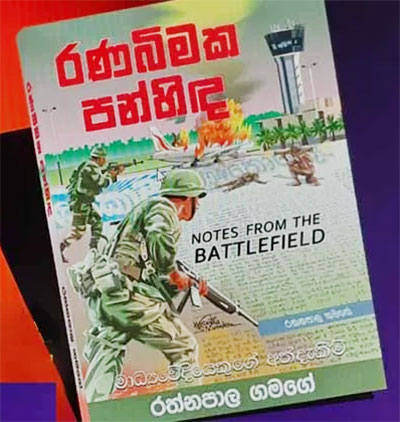
Wijeweera’s execution
Gamage hadn’t even thought of joining the staff of the Lankadeepa at the time the UNP battled the second JVP inspired insurgency. The government brought the counter
insurgency campaign to an end in late 1989 early 1990 with the elimination of the JVP leadership.
Controversy surrounds the circumstances, the late Somawansa Amarasinghe escaped with the help of an Army officer. The rest, including the Marxist Party’s leader, Rohana Wijeweera were apprehended and summarily executed.
Gamage recalled him raising Wijeweera’s execution with the late Brigadier Janaka Perera (the much decorated officer was killed in an LTTE suicide attack in early Oct. 2008 at Anuradhapura as he came to address an election rally after having retired as a Major General) at his quarters within the then Army headquarters (the war winning Mahinda Rajapaksa government sold that land. The Yahapalana government (2015-2019), too, sold the adjoining land).
Brigadier Perera had been the head of one of the three teams that were assigned the task of eliminating Rohana Wijeweera. Then DIG Premadasa Udugampola (He passed away in January 2019), the late Maj. Gen. Lakshman Algama (killed in LTTE suicide blast in Dec 2001) and the then Colonel Janaka Perera had been in charge of the teams that eventually hunted down the JVP leadership. Gamage recounted his stimulating conversation with Perera while sipping wine. Gamage was there on the invitation of the officer to share a meal with him. The arrest of a JVPer in the Dehiowita area by an officer attached to Perera team, his interrogation that led to the capture of JVP politburo member Disanayake Mudiyansalage Nandasena alias D.M. Ananda who revealed Wujeweera’s hideout at Ulapone. Did Janaka Perera participate in the execution of the JVP leader? What was the assurance the celebrated the army officer gave Wijeweera soon after he placed a pistol at the JVP leader’s head? Where did Janaka Perera detain Wijeweera? Who accompanied the then Army Chief Cecil Waidyaratne when he visited Wijeweera? Gamage answered all these questions and also revealed why Janaka Perera accompanied the journalist to meet a soothsayer in Anuradhapura. This was years before Gnana Akka’s entry into the scene. Gamage’s reportage of LTTE leader Prabhakaran’s press conference in the Vanni on April 10, 2002 captures the attention of the readers. How a police intelligence officer infiltrated the LTTE defences on the pretext of being a journalist from Colombo assigned to cover the much-touted media briefing and unprecedented security measures that were in place therein to prevent an attempt on Prabhakaran’s life was certainly exciting. Gamage discussed how the LTTE turned the media briefing to a propaganda exercise by non-stop screening of footage of their battlefield victories. The stunning attack on Pooneryn-Nagathivanthurai base established in the early 90s to intercept boat movements across the Jaffna lagoon spurred the LTTE. Those directly responsible for the failure weren’t punished though Army Chief Lt. Gen. Waidyaratne resigned after having accepted responsibility. The LTTE smashed the base in early Nov 1993.
A visit to Vanni
Among other issues addressed by Gamage, perhaps one of the most important was the deficiency in the infantry. The ex-Lankadeepa journalist underscored the extreme difficulties experienced by the Army for want of sufficient men under arms. Gamage dealt with the issue against the backdrop of a visit organized by the Army for a group of Colombo-based journalists, including photographers to visit Army lines in the Vanni during Chandrika Bandaranaike Kumaratunga’s presidency. Ravi Ladduwahetti had been on The Island editorial at that time and was among those were taken there. Veteran journalist Ladduwahetti who had served many English newspapers passed away last week. He was 64 years old. The then Divaina Defence correspondent late Sirimevan Kasthuriarachchi and former UNL photographer Siripala Halwala were also in that media team.
Kasthuriarachchi, whose brother, an officer of the Vijayaba Infantry Regiment (VIR) died in the July 1996 Mullaitivu battle, had covered the conflict extensively and was one of those who always joined such arranged visits.
Like many other journalists Gamage, too, experienced flying with bodies of military personnel killed in action, when he was returning to Colombo from Palaly. The writer experienced the same on more than one occasion over the years.
Gamage shared his experience in flying to Palaly after the LTTE brought down two Avros with heat-seeking missiles on consecutive days in late April 1995. Among those who perished in missile attacks were three Lake House journalists. Gamage was lucky to avoid a Sam 7 hit as in spite of speaking to the then Commander of the Air Force he couldn’t secure a seat on an ill-fated Avro that flew out from Ratmalana air base. Instead, the Commander had offered him the opportunity to board the flight at the Anuradhapura air base when the Avro touched down there. Perhaps the second Avro disaster could have been avoided if the Air Force didn’t take the risk of flying there the day after the mysterious destruction of an Avro while taking off from Palaly.
There had been several other books on the conflict since the eradication of the LTTE’s conventional military capability. The books authored by our Permanent Representative in Geneva C.A. Chadraprema (Gota’s War) and the late Subramaniam Sivakamy alias ‘Col’ Thamilini (‘Thiyunu Asipathaka Sevana Yata’/In the Shadow of a Sharp Sword) are must read. Sinhala translation of ‘Oru Koorvaalin Nizhalil’, life story of high ranking LTTE cadre, ‘Col’ Thamilini, took place at the Sri Lanka Foundation Institute (SLFI) on May 13, 2016.Oru Koorvaalin Nizhalil’ was launched on March 19, 2016, in Kilinochchi, the one-time LTTE bastion.
Gamage’s coverage of UNP presidential candidate Gamini Dissanayake’s assassination should be examined taking into consideration his assessment that the LTTE did so to facilitate Kumaratunga’s victory. At the following presidential election in 1999, the LTTE tried to assassinate Kumaratunga to pave the way for Wickremsinghe to secure the presidency and in 2005 engineered polls boycott to help Mahinda Rajapaksa to win the presidential poll.
Gamage refrained from commenting on why the LTTE helped Mahinda Rajapaksa to win. Perhaps, the LTTE miscalculated Mahinda Rajapaksa’s capacity.
Chief of LTTE procurement ‘KP’ in his first interview with the media given to this writer in the ‘custody’ of the Directorate of Military Intelligence (DMI) declared the LTTE calculated they could take an irreversible upper hand in the battlefield within two years.
Features
Handunnetti and Colonial Shackles of English in Sri Lanka
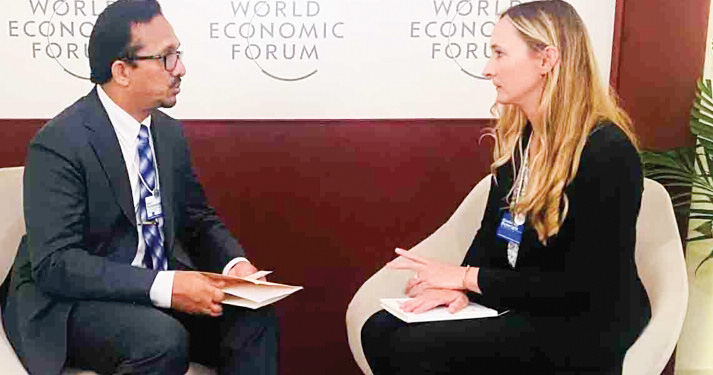
“My tongue in English chains.
I return, after a generation, to you.
I am at the end
of my Dravidic tether
hunger for you unassuaged
I falter, stumble.”
– Indian poet R. Parthasarathy
 When Minister Sunil Handunnetti addressed the World Economic Forum’s ‘Is Asia’s Century at Risk?’ discussion as part of the Annual Meeting of the New Champions 2025 in June 2025, I listened carefully both to him and the questions that were posed to him by the moderator. The subsequent trolling and extremely negative reactions to his use of English were so distasteful that I opted not to comment on it at the time. The noise that followed also meant that a meaningful conversation based on that event on the utility of learning a powerful global language and how our politics on the global stage might be carried out more successfully in that language was lost on our people and pundits, barring a few commentaries.
When Minister Sunil Handunnetti addressed the World Economic Forum’s ‘Is Asia’s Century at Risk?’ discussion as part of the Annual Meeting of the New Champions 2025 in June 2025, I listened carefully both to him and the questions that were posed to him by the moderator. The subsequent trolling and extremely negative reactions to his use of English were so distasteful that I opted not to comment on it at the time. The noise that followed also meant that a meaningful conversation based on that event on the utility of learning a powerful global language and how our politics on the global stage might be carried out more successfully in that language was lost on our people and pundits, barring a few commentaries.
Now Handunnetti has reopened the conversation, this time in Sri Lanka’s parliament in November 2025, on the utility of mastering English particularly for young entrepreneurs. In his intervention, he also makes a plea not to mock his struggle at learning English given that he comes from a background which lacked the privilege to master the language in his youth. His clear intervention makes much sense.
The same ilk that ridiculed him when he spoke at WEF is laughing at him yet again on his pronunciation, incomplete sentences, claiming that he is bringing shame to the country and so on and so forth. As usual, such loud, politically motivated and retrograde critics miss the larger picture. Many of these people are also among those who cannot hold a conversation in any of the globally accepted versions of English. Moreover, their conceit about the so-called ‘correct’ use of English seems to suggest the existence of an ideal English type when it comes to pronunciation and basic articulation. I thought of writing this commentary now in a situation when the minister himself is asking for help ‘in finding a solution’ in his parliamentary speech even though his government is not known to be amenable to critical reflection from anyone who is not a party member.
The remarks at the WEF and in Sri Lanka’s parliament are very different at a fundamental level, although both are worthy of consideration – within the realm of rationality, not in the depths of vulgar emotion and political mudslinging.
The problem with Handunnetti’s remarks at WEF was not his accent or pronunciation. After all, whatever he said could be clearly understood if listened to carefully. In that sense, his use of English fulfilled one of the most fundamental roles of language – that of communication. Its lack of finesse, as a result of the speaker being someone who does not use the language professionally or personally on a regular basis, is only natural and cannot be held against him. This said, there are many issues that his remarks flagged that were mostly drowned out by the noise of his critics.
Given that Handunnetti’s communication was clear, it also showed much that was not meant to be exposed. He simply did not respond to the questions that were posed to him. More bluntly, a Sinhala speaker can describe the intervention as yanne koheda, malle pol , which literally means, when asked ‘Where are you going?’, the answer is ‘There are coconuts in the bag’.
He spoke from a prepared text which his staff must have put together for him. However, it was far off the mark from the questions that were being directly posed to him. The issue here is that his staff appears to have not had any coordination with the forum organisers to ascertain and decide on the nature of questions that would be posed to the Minister for which answers could have been provided based on both global conditions, local situations and government policy. After all, this is a senior minister of an independent country and he has the right to know and control, when possible, what he is dealing with in an international forum.
This manner of working is fairly routine in such international fora. On the one hand, it is extremely unfortunate that his staff did not do the required homework and obviously the minister himself did not follow up, demonstrating negligence, a want for common sense, preparedness and experience among all concerned. On the other hand, the government needs to have a policy on who it sends to such events. For instance, should a minister attend a certain event, or should the government be represented by an official or consultant who can speak not only fluently, but also with authority on the subject matter. That is, such speakers need to be very familiar with the global issues concerned and not mere political rhetoric aimed at local audiences.
Other than Handunnetti, I have seen, heard and also heard of how poorly our politicians, political appointees and even officials perform at international meetings (some of which are closed door) bringing ridicule and disastrous consequences to the country. None of them are, however, held responsible.
Such reflective considerations are simple yet essential and pragmatic policy matters on how the government should work in these conditions. If this had been undertaken, the WEF event might have been better handled with better global press for the government. Nevertheless, this was not only a matter of English. For one thing, Handunnetti and his staff could have requested for the availability of simultaneous translation from Sinhala to English for which pre-knowledge of questions would have been useful. This is all too common too. At the UN General Assembly in September, President Dissanayake spoke in Sinhala and made a decent presentation.
The pertinent question is this; had Handunetti had the option of talking in Sinhala, would the interaction have been any better? That is extremely doubtful, barring the fluency of language use. This is because Handunnetti, like most other politicians past and present, are good at rhetoric but not convincing where substance is concerned, particularly when it comes to global issues. It is for this reason that such leaders need competent staff and consultants, and not mere party loyalists and yes men, which is an unfortunate situation that has engulfed the whole government.
What about the speech in parliament? Again, as in the WEF event, his presentation was crystal clear and, in this instance, contextually sensible. But he did not have to make that speech in English at all when decent simultaneous translation services were available. In so far as content was concerned, he made a sound argument considering local conditions which he knows well. The minister’s argument is about the need to ensure that young entrepreneurs be taught English so that they can deal with the world and bring investments into the country, among other things. This should actually be the norm, not only for young entrepreneurs, but for all who are interested in widening their employment and investment opportunities beyond this country and in accessing knowledge for which Sinhala and Tamil alone do not suffice.
As far as I am concerned, Handunetti’s argument is important because in parliament, it can be construed as a policy prerogative. Significantly, he asked the Minister of Education to make this possible in the educational reforms that the government is contemplating.
He went further, appealing to his detractors not to mock his struggle in learning English, and instead to become part of the solution. However, in my opinion, there is no need for the Minister to carry this chip on his shoulder. Why should the minister concern himself with being mocked for poor use of English? But there is a gap that his plea should have also addressed. What prevented him from mastering English in his youth goes far deeper than the lack of a privileged upbringing.
The fact of the matter is, the facilities that were available in schools and universities to learn English were not taken seriously and were often looked down upon as kaduwa by the political spectrum he represents and nationalist elements for whom the utilitarian value of English was not self-evident. I say this with responsibility because this was a considerable part of the reality in my time as an undergraduate and also throughout the time I taught in Sri Lanka.
Much earlier in my youth, swayed by the rhetoric of Sinhala language nationalism, my own mastery of English was also delayed even though my background is vastly different from the minister. I too was mocked, when two important schools in Kandy – Trinity College and St. Anthony’s College – refused to accept me to Grade 1 as my English was wanting. This was nearly 20 years after independence. I, however, opted to move on from the blatant discrimination, and mastered the language, although I probably had better opportunities and saw the world through a vastly different lens than the minister. If the minister’s commitment was also based on these social and political realities and the role people like him had played in negating our English language training particularly in universities, his plea would have sounded far more genuine.
If both these remarks and the contexts in which they were made say something about the way we can use English in our country, it is this: On one hand, the government needs to make sure it has a pragmatic policy in place when it sends representatives to international events which takes into account both a person’s language skills and his breadth of knowledge of the subject matter. On the other hand, it needs to find a way to ensure that English is taught to everyone successfully from kindergarten to university as a tool for inclusion, knowledge and communication and not a weapon of exclusion as is often the case.
This can only bear fruit if the failures, lapses and strengths of the country’s English language teaching efforts are taken into cognizance. Lamentably, division and discrimination are still the main emotional considerations on which English is being popularly used as the trolls of the minister’s English usage have shown. It is indeed regrettable that their small-mindedness prevents them from realizing that the Brits have long lost their long undisputed ownership over the English language along with the Empire itself. It is no longer in the hands of the colonial masters. So why allow it to be wielded by a privileged few mired in misplaced notions of elitism?
Features
Finally, Mahinda Yapa sets the record straight

Clandestine visit to Speaker’s residence:
Finally, former Speaker Mahinda Yapa Abeywardena has set the record straight with regard to a controversial but never properly investigated bid to swear in him as interim President. Abeywardena has disclosed the circumstances leading to the proposal made by external powers on the morning of 13 July, 2022, amidst a large scale staged protest outside the Speaker’s official residence, situated close to Parliament.
Lastly, the former parliamentarian has revealed that it was then Indian High Commissioner, in Colombo, Gopal Baglay (May 2022 to December 2023) who asked him to accept the presidency immediately. Professor Sunanda Maddumabandara, who served as Senior Advisor (media) to President Ranil Wickremesinghe (July 2022 to September 2024), disclosed Baglay’s direct intervention in his latest work, titled ‘Aragalaye Balaya’ (Power of Aragalaya).
Prof. Maddumabandara quoted Abeywardena as having received a startling assurance that if he agreed to accept the country’s leadership, the situation would be brought under control, within 45 minutes. Baglay had assured Abeywardena that there is absolutely no harm in him succeeding President Gotabaya Rajapaksa, in view of the developing situation.
The author told the writer that only a person who had direct control over the violent protest campaign could have given such an assurance at a time when the whole country was in a flux.
One-time Vice Chancellor of the Kelaniya University, Prof. Maddumabandara, launched ‘Aragalaye Balaya’ at the Sri Lanka Foundation on 20 November. In spite of an invitation extended to former President Gotabaya Rajapaksa, the ousted leader hadn’t attended the event, though UNP leader Ranil Wickremesinghe was there. Maybe Gotabaya felt the futility of trying to expose the truth against evil forces ranged against them, who still continue to control the despicable agenda.
Obviously, the author has received the blessings of Abeywardena and Wickremesinghe to disclose a key aspect in the overall project that exploited the growing resentment of the people to engineer change of Sri Lankan leadership.
The declaration of Baglay’s intervention has contradicted claims by National Freedom Front (NFF) leader Wimal Weerawansa (Nine: The hidden story) and award-winning writer Sena Thoradeniya (Galle Face Protest: System change for anarchy) alleged that US Ambassador Julie Chung made that scandalous proposal to Speaker Abeywardena. Weerawansa and Thoradeniya launched their books on 25 April and 05 July, 2023, at the Sri Lanka Foundation and the National Library and Documentation Services Board, Independence Square, respectively. Both slipped in accusing Ambassador Chung of making an abortive bid to replace Gotabaya Rajapaksa with Mahinda Yapa Abeywardena.
Ambassador Chung categorically denied Weerawansa’s allegation soon after the launch of ‘Nine: The hidden story’ but stopped short of indicating that the proposal was made by someone else. Chung had no option but to keep quiet as she couldn’t, in response to Weerawansa’s claim, have disclosed Baglay’s intervention, under any circumstances, as India was then a full collaborator with Western designs here for its share of spoils. Weerawansa, Thoradeniya and Maddumabandara agree that Aragalaya had been a joint US-Indian project and it couldn’t have succeeded without their intervention. Let me reproduce the US Ambassador’s response to Weerawansa, who, at the time of the launch, served as an SLPP lawmaker, having contested the 2020 August parliamentary election on the SLPP ticket.
“I am disappointed that an MP has made baseless allegations and spread outright lies in a book that should be labelled ‘fiction’. For 75 years, the US [and Sri Lanka] have shared commitments to democracy, sovereignty, and prosperity – a partnership and future we continue to build together,” Chung tweeted Wednesday 26 April, evening, 24 hours after Weerawansa’s book launch.
Interestingly, Gotabaya Rajapaksa has been silent on the issue in his memoirs ‘The Conspiracy to oust me from Presidency,’ launched on 07 March, 2024.
What must be noted is that our fake Marxists, now entrenched in power, were all part and parcel of Aragalaya.
A clandestine meeting
Abeywardena should receive the appreciation of all for refusing to accept the offer made by Baglay, on behalf of India and the US. He had the courage to tell Baglay that he couldn’t accept the presidency as such a move violated the Constitution. In our post-independence history, no other politician received such an offer from foreign powers. When Baglay stepped up pressure, Abeywardena explained that he wouldn’t change his decision.
Maddumabandara, based on the observations made by Abeywardena, referred to the Indian High Commissioner entering the Speaker’s Official residence, unannounced, at a time protesters blocked the road leading to the compound. The author raised the possibility of Baglay having been in direct touch with those spearheading the high profile political project.
Clearly Abeywardena hadn’t held back anything. The former Speaker appeared to have responded to those who found fault with him for not responding to allegations, directed at him, by revealing everything to Maddumabandara, whom he described in his address, at the book launch, as a friend for over five decades.
At the time, soon after Baglay’s departure from the Speaker’s official residence, alleged co-conspirators Ven. Omalpe Sobitha, accompanied by Senior Professor of the Sinhala Faculty at the Colombo University, Ven. Agalakada Sirisumana, health sector trade union leader Ravi Kumudesh, and several Catholic priests, arrived at the Speaker’s residence where they repeated the Indian High Commissioner’s offer. Abeywardena repeated his previous response despite Sobitha Thera acting in a threatening manner towards him to accept their dirty offer. Shouldn’t they all be investigated in line with a comprehensive probe?
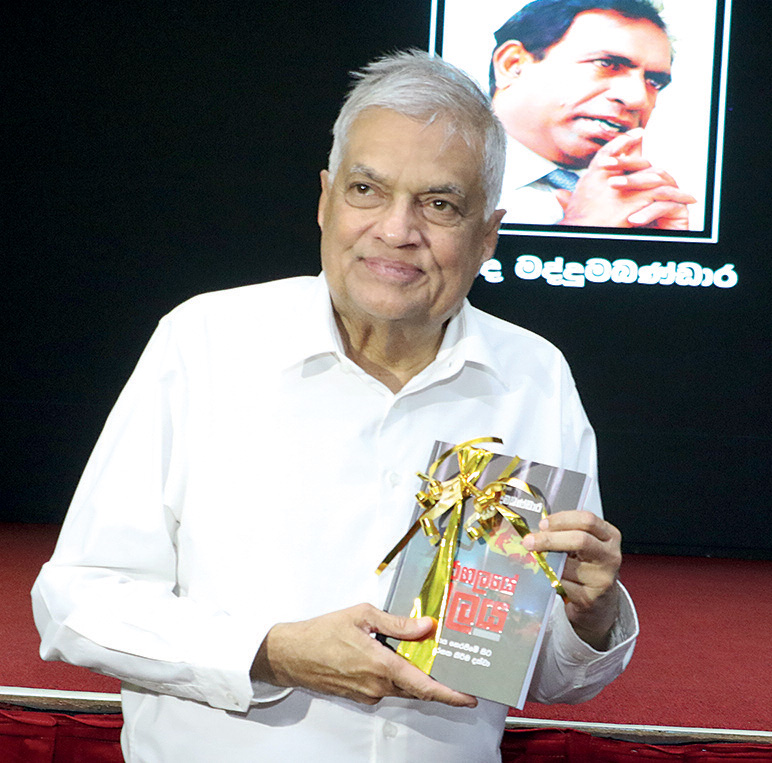
Ex-President Wickremesinghe with a copy of Aragalaye Balaya he received from its author, Prof. Professor Sunanda Maddumabandara, at the Sri Lanka Foundation recently (pic by Nishan S Priyantha)
On the basis of what Abeywardena had disclosed to him, Maddumabanadara also questioned the circumstances of the deployment of the elite Special Task Force (STF) contingent at the compound. The author asked whether that deployment, without the knowledge of the Speaker, took place with the intervention of Baglay.
Aragalaye Balaya
is a must read for those who are genuinely interested in knowing the unvarnished truth. Whatever the deficiencies and inadequacies on the part of the Gotabaya Rajapaksa administration, external powers had engineered a change of government. The writer discussed the issues that had been raised by Prof. Maddumabandara and, in response to one specific query, the author asserted that in spite of India offering support to Gotabaya Rajapaksa earlier to get Ranil Wickremesinghe elected as the President by Parliament to succeed him , the latter didn’t agree with the move. Then both the US and India agreed to bring in the Speaker as the Head of State, at least for an interim period.
If Speaker Abeywardena accepted the offer made by India, on behalf of those backing the dastardly US backed project, the country could have experienced far reaching changes and the last presidential election may not have been held in September, 2004.
After the conclusion of his extraordinary assignment in Colombo, Baglay received appointment as New Delhi’s HC in Canberra. Before Colombo, Baglay served in Indian missions in Ukraine, Russia, the United Kingdom, Nepal and Pakistan (as Deputy High Commissioner).
Baglay served in New Delhi, in the office of the Prime Minister of India, and in the Ministry of External Affairs as its spokesperson, and in various other positions related to India’s ties with her neighbours, Europe and multilateral organisations.
Wouldn’t it be interesting to examine who deceived Weerawansa and Thoradeniya who identified US Ambassador Chung as the secret visitor to the Speaker’s residence. Her high-profile role in support of the project throughout the period 31 March to end of July, 2022, obviously made her an attractive target but the fact remains it was Baglay who brought pressure on the then Speaker. Mahinda Yapa Abeywardena’s clarification has given a new twist to “Aragalaya’ and India’s diabolical role.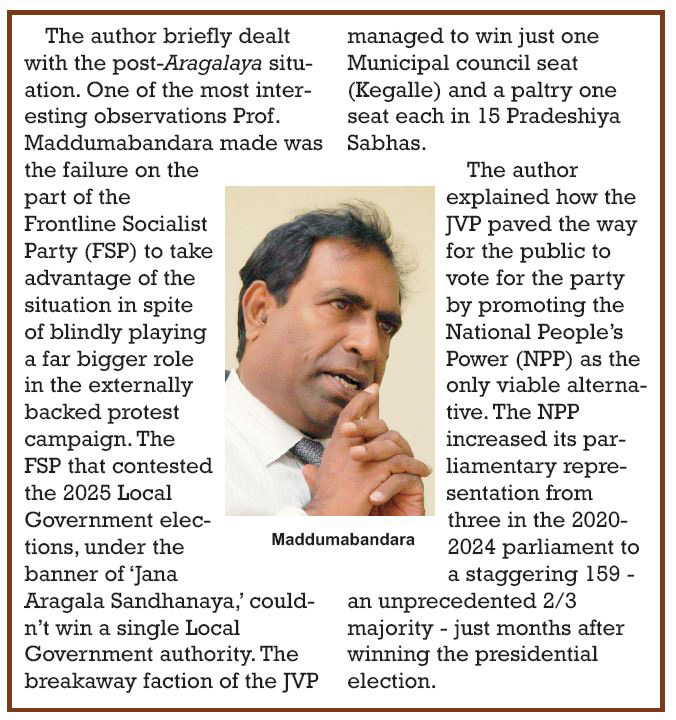
Absence of investigations
Sri Lanka never really wanted to probe the foreign backed political plot to seize power by extra-parliamentary means. Although some incidents had been investigated, the powers that be ensured that the overall project remained uninvestigated. In fact, Baglay’s name was never mentioned regarding the developments, directly or indirectly, linked to the devious political project. If not for Prof. Maddumabandara taking trouble to deal with the contentious issue of regime change, Baglay’s role may never have come to light. Ambassador Chung would have remained the target of all those who found fault with US interventions. Let me be clear, the revelation of Baglay’s clandestine meeting with the Speaker didn’t dilute the role played by the US in Gotabaya Rajapaksa’s removal.
If Prof. Maddumabandara propagated lies, both the author and Abeywardana should be appropriately dealt with. Aragalaye Balaya failed to receive the desired or anticipated public attention. Those who issue media statements at the drop of a hat conveniently refrained from commenting on the Indian role. Even Abeywardena remained silent though he could have at least set the record straight after Ambassador Chung was accused of secretly meeting the Speaker. Abeywardena could have leaked the information through media close to him. Gotabaya Rajapaksa and Ranil Wickremesinghe, too, could have done the same but all decided against revealing the truth.
A proper investigation should cover the period beginning with the declaration made by Gotabaya Rajapaksa’s government, in April 2022, regarding the unilateral decision to suspend debt repayment. But attention should be paid to the failure on the part of the government to decide against seeking assistance from the International Monetary Fund (IMF) to overcome the crisis. Those who pushed Gotabaya Rajapaksa to adopt, what they called, a domestic solution to the crisis created the environment for the ultimate collapse that paved the way for external interventions. Quite large and generous Indian assistance provided to Sri Lanka at that time should be examined against the backdrop of a larger frightening picture. In other words, India was literally running with the sheep while hunting with the hounds. Whatever the criticism directed at India over its role in regime change operation, prompt, massive and unprecedented post-Cyclone Ditwah assistance, provided by New Delhi, saved Sri Lanka. Rapid Indian response made a huge impact on Sri Lanka’s overall response after having failed to act on a specific 12 November weather alert.
It would be pertinent to mention that all governments, and the useless Parliament, never wanted the public to know the truth regarding regime change project. Prof. Maddumabandara discussed the role played by vital sections of the armed forces, lawyers and the media in the overall project that facilitated external operations to force Gotabaya Rajapaksa out of office. The author failed to question Wickremesinghe’s failure to launch a comprehensive investigation, with the backing of the SLPP, immediately after he received appointment as the President. There seems to be a tacit understanding between Wickremesinghe and the SLPP that elected him as the President not to initiate an investigation. Ideally, political parties represented in Parliament should have formed a Special Parliamentary Select Committee (PSC) to investigate the developments during 2019 to the end of 2022. Those who had moved court against the destruction of their property, during the May 2022 violence directed at the SLPP, quietly withdrew that case on the promise of a fresh comprehensive investigation. This assurance given by the Wickremesinghe government was meant to bring an end to the judicial process.
When the writer raised the need to investigate external interventions, the Human Rights Commission of Sri Lanka (HRCSL) sidestepped the issue. Shame on the so-called independent commission, which shows it is anything but independent.
Sumanthiran’s proposal
Since the eradication of the Liberation Tigers of Tamil Eelam (LTTE) in May 2009, the now defunct Tamil National Alliance’s (TNA) priority had been convincing successive governments to withdraw the armed forces/ substantially reduce their strength in the Northern and Eastern Provinces. The Illankai Thamil Arasu Kadchi (ITAK)-led TNA, as well as other Tamil political parties, Western powers, civil society, Tamil groups, based overseas, wanted the armed forces out of the N and E regions.
Abeywardena also revealed how the then ITAK lawmaker, M.A. Sumanthiran, during a tense meeting chaired by him, in Parliament, also on 13 July, 2022, proposed the withdrawal of the armed forces from the N and E for redeployment in Colombo. The author, without hesitation, alleged that the lawmaker was taking advantage of the situation to achieve their longstanding wish. The then Speaker also disclosed that Chief Opposition Whip Lakshman Kiriella and other party leaders leaving the meeting as soon as the armed forces reported the protesters smashing the first line of defence established to protect the Parliament. However, leaders of minority parties had remained unruffled as the situation continued to deteriorate and external powers stepped up efforts to get rid of both Gotabaya Rajapaksa and Ranil Wickremesinghe to pave the way for an administration loyal and subservient to them. Foreign powers seemed to have been convinced that Speaker Abeywardena was the best person to run the country, the way they wanted, or till the Aragalaya mob captured the House.
The Author referred to the role played by the media, including social media platforms, to promote Gotabaya Rajapaksa’s successor. Maddumamabandara referred to the Hindustan Times coverage to emphasise the despicable role played by a section of the media to manipulate the rapid developments that were taking place. The author also dealt with the role played by the Janatha Vimukthi Peramuna (JVP) in the project with the focus on how that party intensified its actions immediately after Gotabaya Rajapaksa stepped down.
Disputed assessment
The Author identified Ministers Bimal Rathnayaka, Sunil Handunetti and K.D. Lal Kantha as the persons who spearheaded the JVP bid to seize control of Parliament. Maddumabanda unflinchingly compared the operation, mounted against Gotabaya Rajapaksa, with the regime change operations carried out in Iraq, Libya, Egypt and Ukraine. Asserting that governments loyal to the US-led Western block had been installed in those countries, the author seemed to have wrongly assumed that external powers failed to succeed in Sri Lanka (pages 109 and 110). That assertion is utterly wrong. Perhaps, the author for some unexplained reasons accepted what took place here. Nothing can be further from the truth than the regime change operation failed (page 110) due to the actions of Gotabaya Rajapaksa, Mahinda Yapa Abeywardana and Ranil Wickremesinghe. In case, the author goes for a second print, he should seriously consider making appropriate corrections as the current dispensation pursues an agenda in consultation with the US and India.
The signing of seven Memorandums of Understanding (MoUs) with India, including one on defence, and growing political-defence-economic ties with the US, have underscored that the JVP-led National People’s Power (NPP) may not have been the first choice of the US-India combine but it is certainly acceptable to them now.
The bottom line is that a democratically elected President, and government, had been ousted through unconstitutional means and Sri Lanka meekly accepted that situation without protest. In retrospect, the political party system here has been subverted and changed to such an extent, irreparable damage has been caused to public confidence. External powers have proved that Sri Lanka can be influenced at every level, without exception, and the 2022 ‘Aragalaya’ is a case in point. The country is in such a pathetic state, political parties represented in Parliament and those waiting for an opportunity to enter the House somehow at any cost remain vulnerable to external designs and influence.
Cyclone Ditwah has worsened the situation. The country has been further weakened with no hope of early recovery. Although the death toll is much smaller compared to that of the 2004 tsunami, economic devastation is massive and possibly irreversible and irreparable.
By Shamindra Ferdinando
Features
Radiance among the Debris
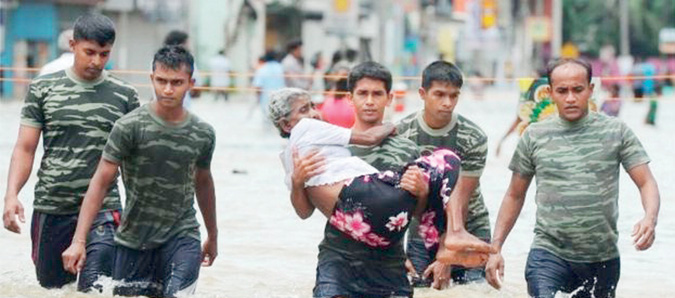
Over the desolate watery wastes,
Dulling the glow of the fabled Gem,
There opens a rainbow of opportunity,
For the peoples North and South,
To not only meet and greet,
But build a rock-solid bridge,
Of mutual help and solidarity,
As one undivided suffering flesh,
And we are moved to say urgently-
‘All you who wax so lyrically,
Of a united nation and reconciliation,
Grab this bridge-building opportunity.’
By Lynn Ockersz
-

 Features5 days ago
Features5 days agoFinally, Mahinda Yapa sets the record straight
-

 News7 days ago
News7 days agoOver 35,000 drug offenders nabbed in 36 days
-

 News6 days ago
News6 days agoCyclone Ditwah leaves Sri Lanka’s biodiversity in ruins: Top scientist warns of unseen ecological disaster
-

 News7 days ago
News7 days agoRising water level in Malwathu Oya triggers alert in Thanthirimale
-

 Features5 days ago
Features5 days agoHandunnetti and Colonial Shackles of English in Sri Lanka
-

 Business3 days ago
Business3 days agoCabinet approves establishment of two 50 MW wind power stations in Mullikulum, Mannar region
-

 Business7 days ago
Business7 days agoSri Lanka betting its tourism future on cold, hard numbers
-

 News6 days ago
News6 days agoJetstar to launch Australia’s only low-cost direct flights to Sri Lanka, with fares from just $315^


